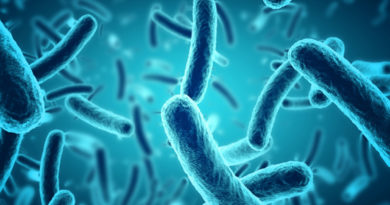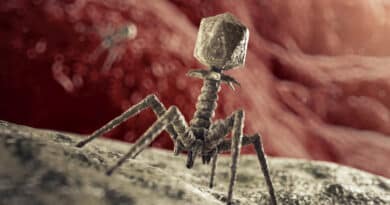Pseudomonas aeruginosa
Pseudomonas are a large group of aerobic, non sporing Gram negative bacilli, they are motile by polar flagella. They are ubiquitous, mostly saprophytic, being found in water, soil or other moist environments.
Some of them are pathogenic to plants, insects and reptiles. A few cause human infection, typically opportunistic.
Morphology
It is a slender Gram negative bacillus, 1.5 – 3 x 0.5 micrometer, actively motile by a polar flagella. Clinical isolates are often piliated.
It is non capsulated but many strains have a mucoid slime layer.
Cultural Characteristics
It is an obligate aerobe, but can grow anaerobically if nitrate is available. Growth occurs at a wide range of temperature 6 – 42 C, the optimum temperature is 37 C.
It grows well on ordinary media, producing large, opaque, irregular colonies, with a distinctive, musty, mawkish or earthy smell.
If culture on nutrient agar it shows iridescent patches with a metallic sheen. It grows on MacConkey and DCA media, forming non lactose fermenting colonies. Many strains of pseudomonas are hemolytic on blood agar. In broth, it forms a dense turbidity with a surface pellicle.
Biochemical Reactions
Pseudomonas shows an oxidative and nonfermentative metabolism. Peptone water sugars are unsuitable for detecting acid production, since this is weak and gets neutralized by alkali reduced from peptone.
Glucose is utilized oxidatively, forming acid only. Indole, MR, VP and H2S tests are negative. Nitrates are reduced to nitrites and further to gaseous nitrogen. Catalase, oxidase and arginine dihydrolase tests are positive.
Resistance
The bacillus is not particularly heat resistant, being killed at 55 C in one hour but exhibits a high degree of resistance to chemical agents. It is resistant to the common antiseptics and disinfectants such as quaternary ammonium compounds, chloroxylenol and hexachlorophane and may even grow profusely in bottles of such antiseptic lotions kept for use in hospitals.
Pathogenicity
‘Blue pus’ was known as a surgical entity long before Gerard (1882) isolated Ps. aeruginosa from such cases.
The pathogenic importance of the bacillus was not adequately recognized till recently, when it has established itself as one of the most troublesome agents causing nosocomial infections. In the community outside the hospital, the most common infection caused by Ps. aeruginosa is suppurative otitis, which is chronic though not disabling. In the hospital, it may cause localised or generalized infections.
Localised lesions are commonly infections of wounds and bedsores, eye infections and urinary infections following catheterisation. Ps. aeruginosa is the most common and most serious cause of infection in burns. It is also one of the agents responsible for iatrogenic meningitis following lumbar puncture.
It frequently causes post – tracheostomy pulmonary infection. Septicemia and endocarditis may occur in patients who are debilitated due to concomitant infection, malignancy or immunosuppressive therapy.
Laboratory Diagnosis
The bacterium grows readily on most media. The identification of pigmented strains of the bacillus from clinical specimens is easy. But about 10 per cent of isolates may be non pigmented. Prompt oxidase reaction and arginine hydrolysis help in their identification.
It may be necessary to use selective media such as certified agar for isolation from feces or other samples with mixed flora. As Ps. aeruginosa is a frequent contaminant, isolation of the bacillus from a specimen should not always be taken as proof of its etiological role. Repeated isolations help to confirm the diagnosis.
Control
Prevention of Ps. aeruginosa cross-infection in hospital requires constant vigilance and strict attention to asepsis. Antibiotic treatment is not always satisfactory.
Immunotherapy in human burns cases with antiserum to Ps. aeruginosa may be useful. Pseudomonas vaccines are being tried in cystic fibrosis patients who are highly vulnerable to pseudomonas infection.
Specific antibacterial therapy constitutes only one aspect of the management of serous pseudomonas infections.
Reference: The Text Book Of Microbiology



